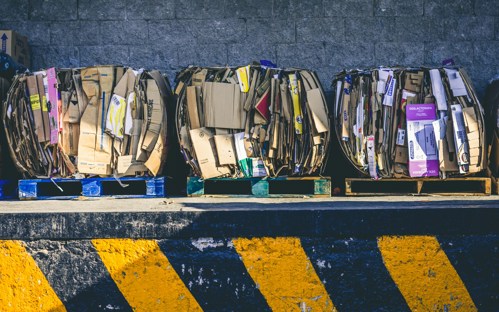
The world has a waste problem. Every year, 2.01 billion tonnes of municipal solid waste are generated globally, and a large portion is in landfills. Without better waste management, this number will only grow, putting pressure on our environment and resources.
That’s where Slim Jim Recycling Stations (SJRS) come in. Designed to make waste segregation easier and more efficient, these stations help businesses, schools and other facilities manage waste responsibly. They don’t just keep spaces cleaner — they play a vital role in reducing landfill waste and supporting sustainability efforts.
Proper waste segregation is one of the most effective ways to reduce landfill waste, but it’s often overlooked. Many recycling efforts fail because people don’t know what goes where, leading to contamination.
Here’s how SJRS makes sorting waste simple and effective:
Colour-coded lids and labels: Clear, visual cues guide users to dispose of items correctly.
Modular design: Stations can be customised for different waste streams, such as recycling, compost, and landfill.
Durability: Made for high-traffic environments, these stations last longer, reducing the need for replacements.
By making recycling straightforward and accessible, Slim Jim Recycling Stations improve the efficiency of waste management, ensuring materials are processed correctly rather than ending up in the wrong place.
The 3Rs — Reduce, Reuse, Recycle — are fundamental to sustainability. However, recycling only works if materials are properly sorted from the start.
A recent Rubbermaid study found that 57% of consumers prioritise reducing waste and increasing recycling. Slim Jim Recycling Stations help meet this demand by keeping recyclables and compostables separate from landfill waste.
Why does this matter? Organic waste in landfills generates methane, a greenhouse gas 25 times more potent than CO₂. Facilities can cut down on unnecessary landfill contributions and reduce emissions by using a system like SJRS.
Many organisations aim to achieve sustainability certifications like LEED (Leadership in Energy and Environmental Design) and ISO 14001, but meeting these standards requires structured waste management.
How SJRS helps facilities comply:
Encourages proper waste diversion to meet waste reduction goals.
Simplifies data tracking on waste streams, making it easier to monitor and improve sustainability performance.
Supports efforts to lower a building’s environmental footprint — important considering buildings account for 40% of global energy use and 33% of greenhouse gas emissions.
For businesses looking to prove their commitment to sustainability, integrating SJRS is a tangible step toward greener operations.

Beyond environmental benefits, better waste segregation saves time and money.
Simplifies collection processes: Less mixed waste means less sorting effort for staff.
Reduces labour costs: Streamlined waste disposal makes janitorial tasks more efficient.
Lowers product replacement costs: 89% of businesses prefer longer-lasting products for sustainability, and SJRS delivers on durability.
From corporate offices to healthcare facilities, these stations improve day-to-day operations while reinforcing a commitment to sustainability.
Waste segregation isn’t merely about compliance — it’s about creating a cleaner, more sustainable world.
Slim Jim Recycling Stations provide a simple yet effective way to reduce landfill waste, improve recycling rates and support sustainability initiatives. For businesses and organisations looking for a practical, cost-effective way to manage waste responsibly, investing in the right recycling system is a step in the right direction.
Are you ready to improve your waste management practices? Start by making waste sorting easier and more effective with Slim Jim Recycling Stations.